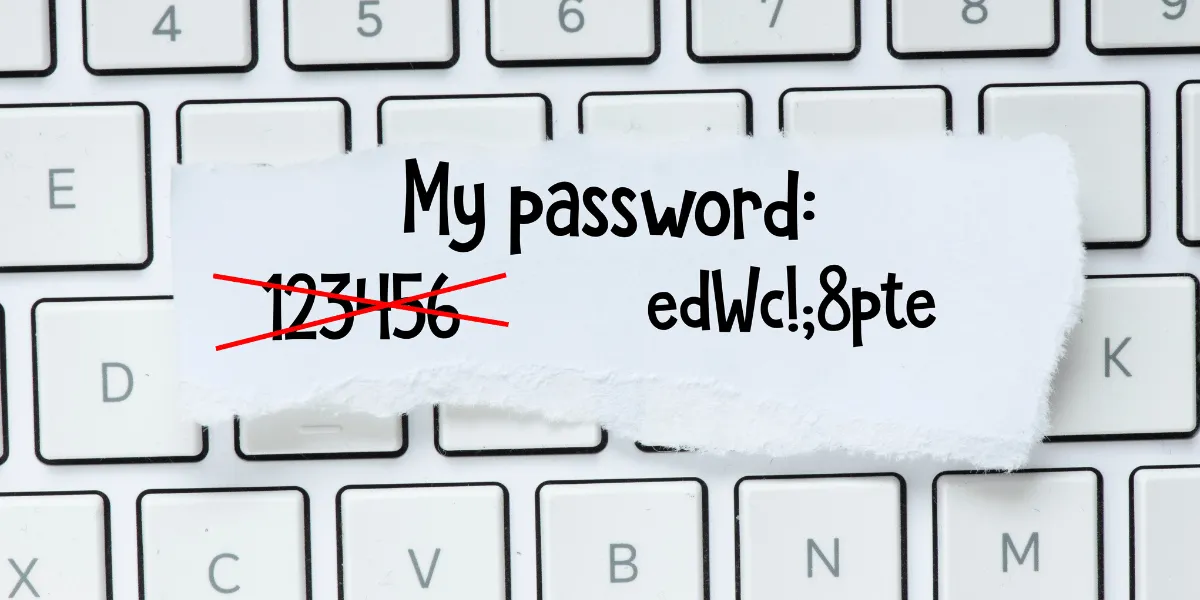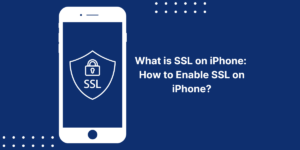What is Password Salt and Hash
Secure storage of passwords is crucial in protecting user accounts from unauthorized access. Password hashing is the process of transforming a password into a fixed-length string of characters using a mathematical algorithm, making it infeasible to convert the hash back to the original password. Salt is random data added to each password before hashing to prevent dictionary attacks and protect against compromised password lists. Salting creates a unique hash for each instance of the same password. Together, salting and hashing provide robust password security by ensuring stored passwords remain indecipherable if the database is breached. This layered approach is an industry-standard practice employed by reputable websites and applications that handle sensitive user credentials. Learn More about Password Salt and Hash techniques.
Key Takeaways on Password Salt and Hash
- Salting and hashing passwords before storing them prevents passwords from being obtained by hackers. The salt and hash scramble and secure the passwords.
- Salts are random strings added to passwords before hashing to create unique hashes, even for duplicate passwords. This protects against rainbow table attacks.
- Slow hash algorithms like bcrypt, PBKDF2, and Argon2 force hackers to commit heavy computing resources to crack passwords. This makes brute force attacks infeasible.
- Proper salting and hashing allow companies to securely store user passwords. This prevents plaintext password leaks that would otherwise compromise many user accounts.
- Companies should use slow hash algorithms, unique salts, and many hash iterations to maximize password security. Salted password hashing is crucial for user account protection.
How Passwords Are Normally Stored
To understand why salted password hashing is so important, we first need to know how passwords are normally handled. When a user registers for a new account, they’ll choose a password. Upon signup, the web application receives this password in plaintext, the original unencrypted text string the user typed.
At this stage, the password is vulnerable. If hacked, it could be stolen right out of the signup data. So, the application needs to encrypt it before storing it permanently.
The most basic form of encryption is hashing. A cryptographic hash function converts the plaintext into a scrambled hash value. This process is one-way, meaning the hash cannot be reversed to obtain the original password.
Here’s a simplified example. Let’s say a user chooses the password “password123”. The application runs this through a hash algorithm, which outputs something like “8cb2237d0679ca88db6464eac60da96345513964”. This prevents the plaintext password from being stored.
But there’s a major weakness here – two users choosing the same password will have identical hash values. If the password database is breached, hackers can reverse-lookup these duplicate hashes against rainbow tables to reveal common passwords.
This is where salting comes in.
Leveraging Salt to Randomize Hashes
A salt is a random string added to each password before hashing. This salt is unique for every user.
Let’s go back to our example. Say User 1 signs up with the password “password123′. Before hashing, we generate a random salt like “7vE2fD8AxV” and append it to their password. So, we’d now hash “password1237vE2fD8AxV” instead of the plain password.
This hash value will be entirely unique. Later, if User 2 uses the same password “password123”, they’ll get assigned a different salt like “tp63dBZieC”. So, their hash will be different than User 1, even though they share the same password.
Salting ensures each hash is randomized. Even duplicate passwords will have unique hash values. These defeats precomputed rainbow tables, preventing hackers from looking up hashes to reveal common passwords.
Slow Hash Algorithms Prevent Brute Force Attacks
But salting alone isn’t enough. Attackers can still run brute force cracking attempts against the hash database. This involves trying billions of password guesses, hashing each attempt, and comparing it to the target hashes.
Given enough computer resources, brute force attacks can eventually crack some passwords. To make this infeasible, we need to deliberately slow down the hashing process.
Modern password systems rely on slow hash algorithms like bcrypt, PBKDF2, or Argon2. These formulas require hundreds or thousands of repeated iterations to produce a final hash.
Let’s say our system uses 10,000 rounds. Even a basic password would need to run through 10,000 hash iterations, forcing hackers to commit heavy computing power to brute force attempts. This slows cracking to a crawl.
With both salting and slow hashes, cracking the password database becomes too sluggish to be worthwhile. This combination keeps passwords protected even if the hash database is compromised.
Ongoing Maintenance: Re-Hashing Passwords
When advances are made in hardware, hash algorithms, or hacking techniques, password systems need to evolve. Companies should re-hash their password databases on a periodic basis.
For example, they may re-hash all passwords using:
- New random salts
- More hash iterations
- An upgraded slow hash algorithm
This re-hashing updates all passwords to leverage the latest standards. Some systems can even do this on-the-fly when users log in.
Regular re-hashing maintenance ensures existing hashed passwords benefit from new protections. It’s a crucial part of ongoing password security.
How Salted Hashing Secures Passwords In-Transit and At Rest
Now let’s walk through how salted hashing actually protects passwords:
During Signup
- User chooses plaintext password during account creation
- Application generates secure random salt value
- Salt is appended to password and run through slow hash algorithm (bcrypt, etc) with many iterations
- Final hashed value is stored in password database
During Login
- User enters plaintext password to log in
- Salt is retrieved from password database based on username
- Entered password is combined with salt and run through hashing algorithm
- The resulting hash is compared to the stored hash
- If hashes match, login succeeds. Otherwise, access denied.
This scheme prevents plaintext passwords from ever being stored. And the hashes remain secure against common attacks like rainbow tables or brute forcing.
Benefits of Proper Salted Hashing
- Passwords are protected in transit by HTTPS encryption
- Passwords remain protected at rest since only hashes are stored
- Rainbow table attacks are ineffective thanks to unique salts
- Brute force attacks are infeasible due to slow hash algorithms
- Re-hashing adds new defenses against emerging threats
Proper use of salting and hashing allows companies to keep their users’ passwords secure. Even a complete database breach would not reveal plaintext passwords to hackers.
Avoiding Common Pitfalls When Salting and Hashing Passwords
Implementing a safe password system requires avoiding some hazards:
Weak Hashing Algorithms
Legacy systems may use fast hashes like MD5 or SHA1 or SHA2. These are vulnerable to brute force attacks with modern GPU rigs. Always opt for slow hash algorithms.
Hardcoded or Reused Salts
A salt’s randomness is vital for security. Hardcoded or reused salts undermine this, allowing duplicate hashes for the same password. Every user’s salt should be randomly generated.
Low Hash Iterations
Too few hash iterations fail to slow cracking attempts sufficiently. For example, 1,000 iterations can be brute forced rapidly. Systems should use at least 10,000-100,000 iterations.
Lack of Re-Hashing Maintenance
Over time, it’s crucial to re-hash the database with new salts, algorithms, and iterations. This prevents existing hashes from getting weak or predictable.
Logging Salts and Hashes
Salts and password hashes can end up in log files by mistake. This exposes them to potential theft. Ensure logs only contain non-sensitive data.
By steering clear of these hazards, companies can realize the full benefits of salted hashing when securing their users’ passwords.
Best Practices for Salted Password Hashing
To recap, here are some vital best practices:
- Use a modern, slow hashing algorithm like bcrypt, PBKDF2, or Argon2
- Generate a long, cryptographically-secure random salt for each user
- Hash passwords with at least 10,000 iterations, ideally 100,000+
- Re-hash database periodically with new salts and iterations
- Ensure salts and hashes aren’t accidentally logged
- Enforce strong password complexity rules
- Offer two-factor authentication as an added security layer
Following these guidelines will maximize login security for users. Even exposed password hashes will remain extremely difficult for hackers to crack.
How Popular Websites Handle Salted Password Hashing
Most major online services rely on salted hashing to protect user passwords:
- Facebook: bcrypt hashed with individual salts
- Twitter: bcrypt with salts plus email/phone for login
- Google: bcrypt with salts, also offers 2FA
- Dropbox: bcrypt with per-user salts
- LinkedIn: salted hashes plus 2FA
- Netflix: per-user salts with thousands of hash iterations
- Microsoft: PBKDF2 and Argon2 for salted hashes
By utilizing salting, slow hashes, and proper storage, these companies minimize the risks when password databases are compromised. Their methods demonstrate how salted hashing should be implemented.
Storing Passwords: Best Practices vs. Common Failures
Let’s contrast the best practices for storing passwords with some high-profile security failures:
Best Practices
- Salted password hashing with unique salt per user
- Slow hash algorithms like bcrypt or PBKDF2
- 10,000+ hash iterations against brute forcing
- No plaintext passwords stored or logged
- Re-hashing passwords on regular basis
Common Failures
- Plaintext passwords stored in databases
- Fast hash algorithms like MD5 vulnerable to GPU cracking
- Hardcoded salts instead of unique per-user salts
- Low hash iterations allowing rapid brute force
- Salts and hashes leaked through poor logging
- Failing to re-hash passwords as algorithms age
Migrating certificates properly is key to avoiding disruption from the old certificates. Take care to fully restore certificates and keys into the new KSP (Key Storage Provider).
These mistakes have led to serious breaches across many companies. But following password storage best practices minimizes these risks and properly secures user accounts.
Why Double Hashing Passwords is Not Recommended
Sometimes companies attempt to enhance security by double hashing passwords – hashing the hash a second time. However, this backfires and actually weakens passwords:
- Provides no real added protection: The original hash still exists ready to be cracked
- Requires more processing power: Additional hashing taxes servers during logins
- Inhibits re-hashing flexibility: Can’t re-hash just first or second hash independently
- Provides false sense of security: Obscures the fact that only one salt is present
How Password Hashing Differs from Encryption
There’s an important distinction between hashing and encryption. Encryption is two-way – data can be encrypted and then decrypted back to plaintext. But hashing is one-way only. Hashes cannot be “unhashed” to reveal the original text.
Encryption requires storing a secret key to decrypt data. But with hashing, the one-way nature means no key is required. The hash can simply be recomputed to verify passwords, without ever needing to undo the hashing.
This one-way mechanism makes hashing ideal for password storage. The hashes protect passwords without the risks of storing decryption keys. Proper use of salting and hashing provides definitive defense-in-depth for password security.
Conclusion on Password Salt and Hash
Passwords face constant threats from data breaches and hacking attacks. But salted password hashing done right can mitigate these risks and keep user accounts safe. By combining unique salts, slow hash algorithms, and hash iterations, companies can render stolen password databases useless to hackers.
While no system is completely impenetrable, proper salting and hashing comes close. Even exposed hashes will resist cracking thanks to brute force protections. These best practices render viable attacks infeasible, forcing hackers to look elsewhere.
In information security, layers of protection are key. And salted password hashing represents one of the most crucial layers for defending user accounts against unauthorized access. It should be a standard practice across all password authentication systems.
Salted hashing is one of the most effective tools we have for securing online identities in the digital world. Understanding its mechanics and benefits is essential knowledge for any application or website relying on passwords for security.
Frequently Asked Questions About Password Salt and Hash
What is the purpose of password salting?
Salting adds a random string to each password before hashing. This ensures duplicate passwords have unique hashes, preventing reverse lookup attacks against common passwords.
How does a salt protect hashed passwords?
The random salt causes the hash value to be completely unique even for the same password. These defeats precomputed rainbow tables that crackers use to reverse hash common passwords.
What is the benefit of slow hashing algorithms?
Hashes like bcrypt and PBKDF2 use hundreds or thousands of hash iterations. This significantly slows brute force attempts and makes cracking infeasible due to the required computing resources.
How often should password hashes be re-generated?
Industry best practice is to re-hash passwords around every 12-18 months. This allows new salts, algorithms, and iterations to be applied as hardware and hacking techniques evolve over time.
Can you reverse a password hash?
No, cryptographic hash functions are one-way only. It is impossible to “unhash” a hash to recover the original password plaintext. The only option is brute forcing guesses to find a matching hash.
Is double hashing passwords more secure than single hashing?
No, double hashing provides minimal added security and comes with drawbacks. Using a single strong slow hash algorithm with a unique salt per user is superior and more efficient.
Does password hashing require encryption keys?
No, unlike encryption, hashing is one-way only. No key is required to produce the hash or to verify it against the stored hash. The one-way nature of hashing removes key management risks.
Can rainbow table attacks defeat salted password hashes?
No, rainbow tables only work on hashes generated from plain unsalted passwords. The random salt added to each password prevents rainbow table lookups from revealing the original passwords.
What should companies do after a password hash leak?
They should force password resets for all users to assign new hashes. They should also re-hash all passwords using improved algorithms, more iterations, and new random salts per user.
How does salted hashing compare to plaintext password storage?
Plaintext storage provides no protection if breached. But salted hashes render passwords useless even if completely exposed. Proper hashing is indispensable for securing passwords.



